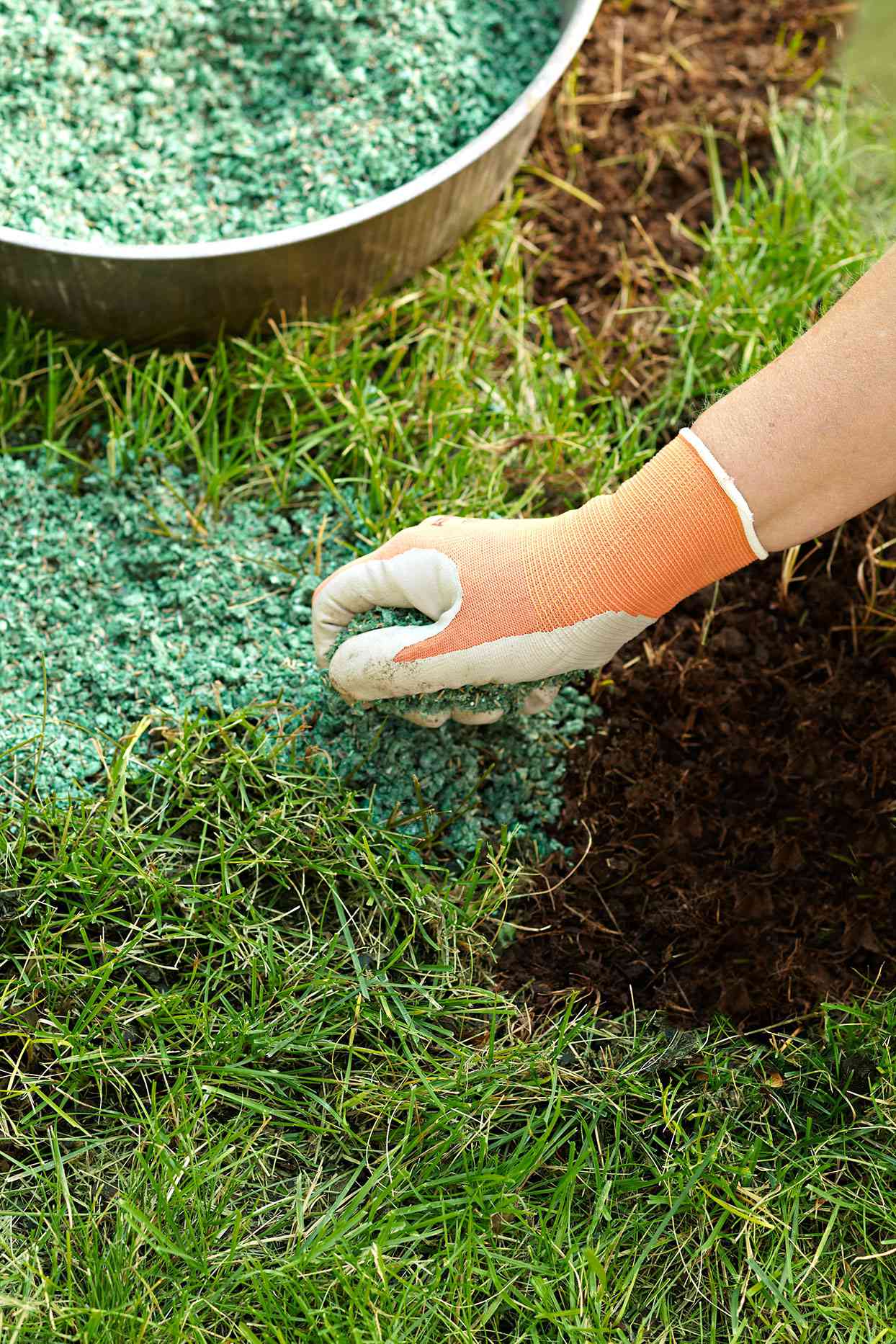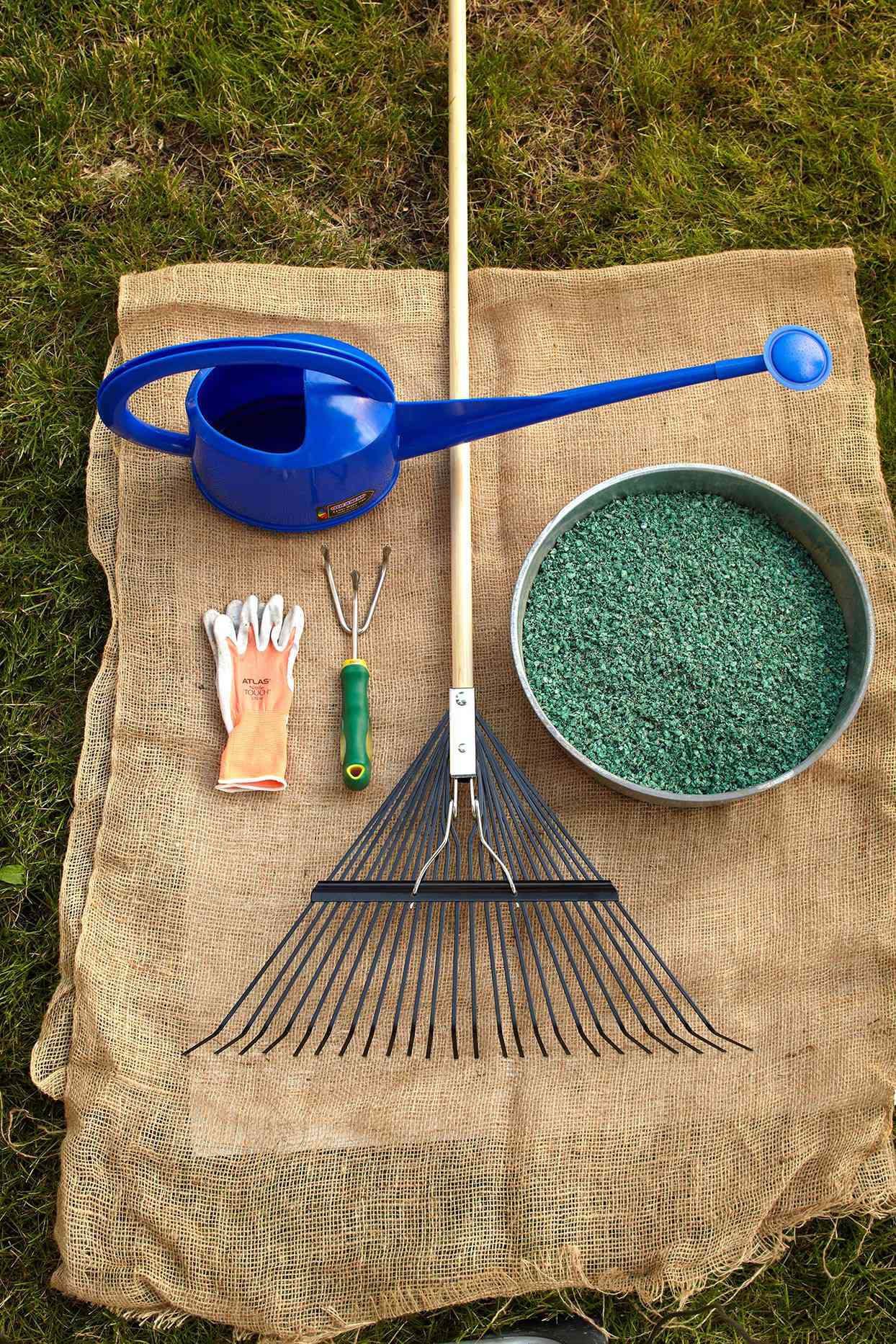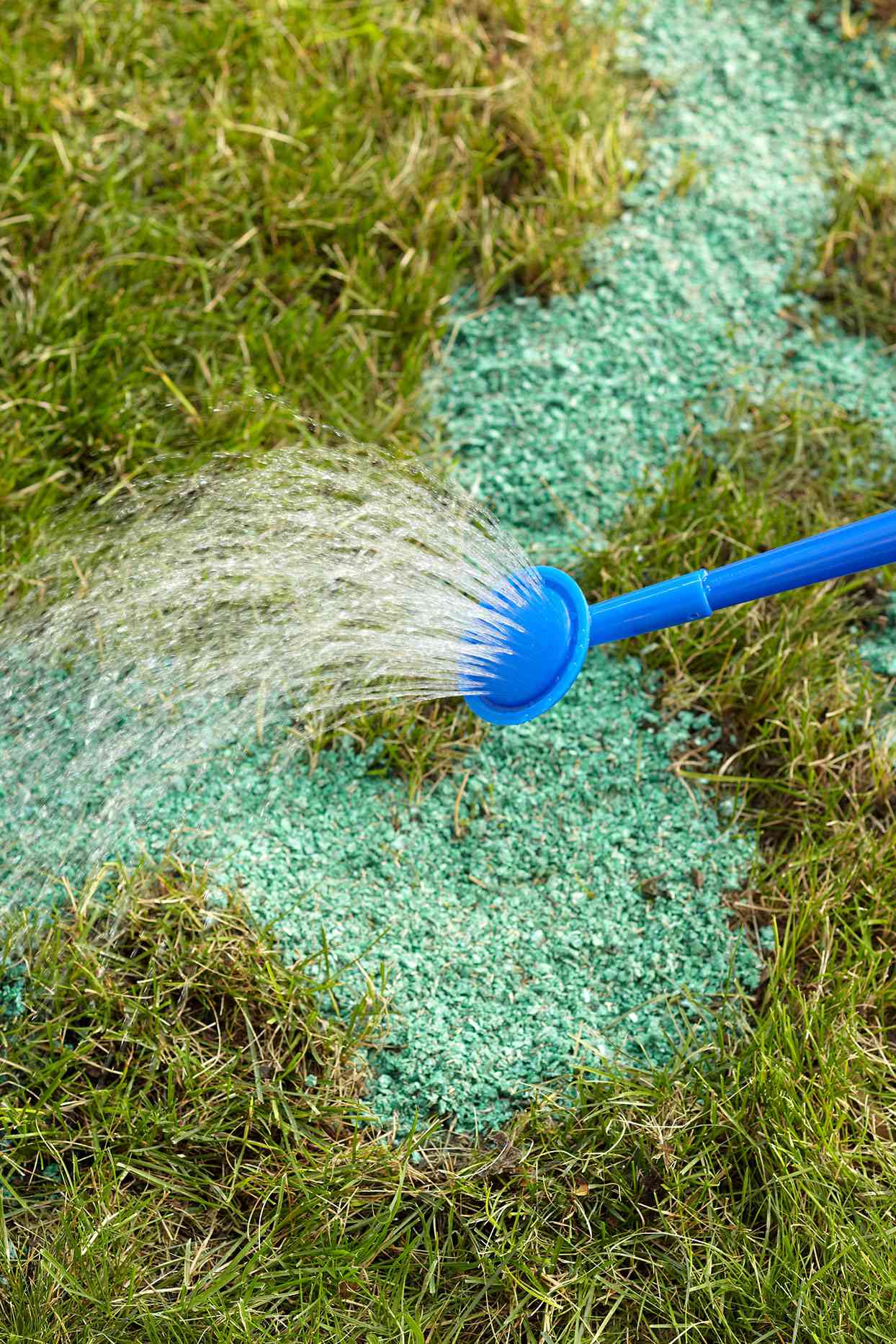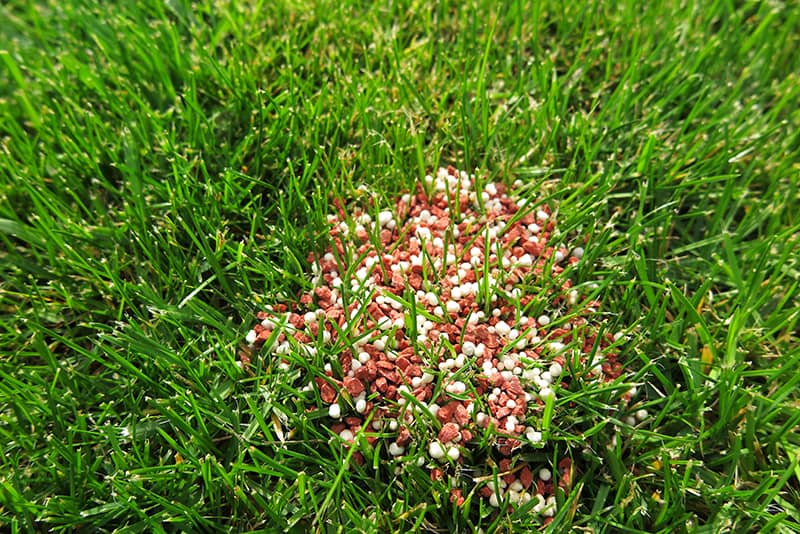Written by Jasper Boekelman and published on https://www.bhg.com/
Plants need to be fertilized because most soil does not provide the essential nutrients required for optimum growth. Even if you are lucky enough to start with great garden soil, as your plants grow, they absorb nutrients and leave the soil less fertile. Remember those tasty tomatoes and beautiful roses you grew last year? It took nutrients from the soil to build those plant tissues. By fertilizing your garden, you replenish lost nutrients and ensure that this year’s plants have the food they need to flourish.
Organic Fertilizer for a Healthy Lawn
Enjoy a landscape filled with lush, green grass—as well as healthier soil—by using an organic lawn fertilizer that is safe for kids and pets.
Did you know that as part of a well-maintained landscape, lush green turfgrass increases the value of your home by 15 to 20 percent, according to The Lawn Institute, an organization of experts working to improve lawns, turf, and the economy and environment surrounding them.
Even if you have no plans to sell your home, a lush green lawn increases your family’s ability to play, relax, and entertain by quite a lot. That enjoyment, your family’s health, and the well-being of your surrounding environment are why organic lawn fertilizer coupled with organic lawn care is so important. Organic lawn care promotes healthy, green grass while nurturing human life, wildlife, soil, and waterways in your community.

Choose the Right Fertilizer
As a homeowner who believes in organic lawn care, your mantra needs to be “Feed the soil, not the plant.” In other words, consider more than how your grass will respond to the application of fertilizer. Consider the effects your chosen fertilizer will have on the microorganisms and macroorganisms (such as earthworms) that keep soil healthy, as well as groundwater pollution and other environmental concerns.
Your first impulse may be to use chemical fertilizer as your parents did. Chemical fertilizer labels typically include three numbers (e.g., 20-10-10) that stand for three major nutrients: nitrogen (N), phosphorus (P), and potassium (K). Applied three or more times a year, this type of fertilizer greens a lawn fast but does nothing for the soil underneath because the chemicals eventually leach away.
Organic fertilizers, on the other hand, almost always include nutrients beyond N, P, and K. These fertilizers, which are derived from plant and animal sources, release nutrients slowly to feed the grass while promoting soil health. Popular plant sources for organic fertilizers include alfalfa, cottonseed meal, and seaweed. Animal sources include bone meal, bat guano, and manure from chickens, cows, and horses.
So what is the best organic lawn fertilizer to use on your lawn? There is no single right answer because choosing a particular product requires an understanding of your soil composition—which is easy to do with a simple DIY soil test (or by working with a Cooperative Extension Office). For example, if test results show your soil is low in potassium, you’ll want to find a fertilizer that boosts that particular nutrient.
When shopping for organic lawn fertilizer, look for labels using terms like “natural organic” and “slow release.” If a product claims to be organic, but it has an NPK ratio larger than 15, leave it on the shelf. Please keep in mind that organic fertilizer availability varies greatly by region. So do your homework, then visit your local garden center or talk with a state extension office agent to learn more about organic lawn fertilizers that are readily available and effective for turfgrass in your region.
If you don’t want to purchase fertilizer, try top-dressing your lawn with DIY compost. Learn how to make organic compost to use as a lawn fertilizer from food waste, shredded leaves, and grass clippings.
Commercial Organic Fertilizers
So many labels to read, so little time. Shorten your shopping time by looking for these commercial organic fertilizers online and/or at local outlets operated by national retailers. These products may also be carried at your local nurseries and lawn and garden centers.

Timing is Everything
Ready to go organic? Start improving your lawn by aerating it before fertilizing. Because aerating kills roots, it should only be done in the spring or fall when the lawn isn’t being stressed by hot weather. Unlike a vegetable garden, a lawn gets compacted by foot traffic. Aerating a lawn addresses that compaction by cutting numerous small holes through the grass to reach the soil. By cutting through this thatch (the top layer of stems, roots, and dead organic matter), you improve air circulation and water absorption.
Spring and fall are the right times to improve soil structure with amendments, which help grass roots make the best use of the food you’ll provide later via fertilizer. If you’re not sure what your soil needs, top dress it with a thin layer of organic compost, which balances the pH and improves water retention in sandy soils and drainage in clay soils.
So when should you fertilize your lawn? Feed your lawn with an organic fertilizer around Memorial Day (late May or early June). Apply a slow-release fertilizer that will produce nitrogen gradually; that way your grass can use it all summer long. If your grass is green and not being stressed by drought, consider applying an organic fertilizer a second time in early July (around Independence Day). Apply fertilizer the final time in early fall (around Labor Day). That last application will let your grass store nutrients in its roots, which means faster greening and thicker growth the following spring.
Editor’s Tip: If you leave clippings (no more than an inch long, please) on your lawn as you mow, the nitrogen they release as they decompose will provide an additional application of nitrogen during the year. This reduces the amount of nitrogen fertilizer you’ll need to add each year.

Fertilize Correctly
If you are switching to organic lawn care after having used traditional chemicals and fertilizers, remember that the appearance will improve slower than what you are used to. Keep the following tips in mind as you work to make your lawn safer for your family and the community’s ecosystem.
Wait Patiently
Organic fertilizer does not green a lawn at the same rate as conventional fertilizers. Organic fertilizers contain complex nitrogen compounds. The soil microorganisms slowly break down the compounds and make nitrogen—the element responsible for greening a lawn—available to plant roots. This process takes time.
Follow Label Directions
Most organic fertilizers contain phosphorus, which has the potential to contaminate groundwater. Apply fertilizer as directed, and always sweep fertilizer off solid surfaces and avoid letting it get into bodies of water.

Pair Organic Fertilization with Natural Lawn Care
Organic lawn fertilizer is more effective and safer for the environment when paired with organic lawn care practices, which don’t take any more work than traditional lawn care. Use the following tips to guide your efforts.
Limit Irrigation
Water the lawn thoroughly only when drought stress is evident. (Frequent shallow watering results in shallow roots. Infrequent deep watering encourages roots to go deep in search of water. You want the latter.) Watch for the lawn to appear bluish-gray or look for visible footprints after someone walks across it. You can also save water by letting the lawn go dormant. If you must have a green lawn, water early in the morning. Cool-season grasses can survive without water for several weeks.
Mow Grass 3 to 4 Inches
Never mow your grass shorter than 3 inches because mowing too short creates extra stress for your lawn. (Shaggy is better than short when dealing with an organic lawn.) That’s because short grass has a correspondingly short root system, which increases the need for food and water and encourages weed growth. Never remove more than one-third of the leaf blade at any one mowing. Keep mower blades sharp to prevent shredded edges and browning.
Practice Prevention
The best way to avoid weeds, insect pests, and fungal diseases is to mow, water, and fertilize to promote healthy turf. Lawn grass with a deep root system, adequate and consistent source of nutrients and regular mowing will generally be able to fend off any pests and diseases that try to attack it. Intentional lawn management goes a long way toward preventing problems, and it leaves you more time to enjoy your lawn.
Original post here https://www.bhg.com/gardening/yard/garden-care/organic-lawn-fertilizer-281474979708345/.



